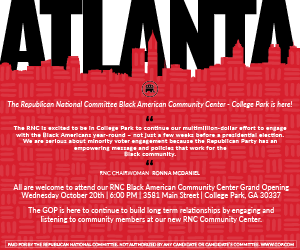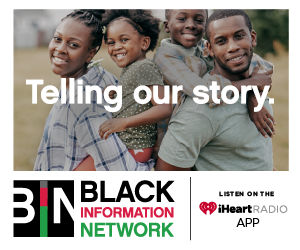on
By Leah S. McDaniel
Diversity is no longer a corporate buzzword. In the dramatically evolving culture of the United States today, the standard definition of “diversity” in reference to individuals is rarely enough, forcing society and the entities within it to go beyond what has, in the not-so-distant past, been considered a “norm.” And so change is happening, some organically and some by force; and corporations are having to evolve to keep up. The innovators get it and are expanding diversity initiatives to encompass inclusion efforts that break traditional molds. Here in Atlanta, several companies are changing the way their employees think about diversity and inclusion (D&I) and providing improved experiences from the top down. We took the time to speak with three who understand that better, as a business imperative, comes from the inside out.
Federal Reserve Bank of Atlanta
It is important to Chapelle Dabney Davis, vice president and chief diversity officer Federal Reserve Bank of Atlanta, that D&I reaches beyond the internal walls of the organization.
Since taking her new role in July 2017, Davis has worked to continue expanding efforts for the company, focusing on ways to enhance work with other D&I groups throughout the city of Atlanta to keep an eye on new practices as well as working internally. “We want our staff to know that diversity and inclusion are important to us; we also want to make sure the public has a good appreciation and that we are seen as a culturally competent organization leveraging differences for the best results.”
Prior to the Dodd-Frank Act of 2010, which established Offices of Women and Minority Inclusion at several federal agencies, Federal Reserve Bank of Atlanta had already been making strides in this area.
“We had a Diversity Advisory Council for a number of years comprised of staff that helped senior management get a feel for issues as they related to diversity and inclusion.”
Through this council, formal employee resource groups were established focusing on five key areas raised by staff, including leadership development, that have over 30 percent employee participation. Davis believes that D&I efforts should be constant and inclusive of education. As such, training occurs at both staff and senior management levels with a focus on topics like bias and privilege.
Most importantly, Federal Reserve Bank of Atlanta is putting its passion on paper, including specific D&I objectives in the bank’s strategic plan as well as management’s annual compensation metrics.
“It’s not to be taken for granted because the strategic plan speaks to what we’re doing and while we have jobs to do to fulfill the federal reserve bank system, how we go about doing that is also important.”
Externally, the bank has increased outreach through companies like Glassdoor and work with vendors to assess their strategies in diversifying their workforce.
The Home Depot
“Orange-blooded family” is a term that you may hear early on in your The Home Depot career and it perfectly sums up how ingrained and imperative diversity and inclusion is within the corporation’s values.
“We say that we bleed orange,” says Beatriz Rodriguez, chief diversity officer. “It’s the spirit that once we put our apron on … we belong to the same family; we are ruled by our values and we’ll do anything to take care of each other and be passionate and committed to our customers.”
D&I is in the fabric of what The Home Depot does daily by fostering a diverse and inclusive culture from their employees to their suppliers. Paramount is that the company listens to its employees to help create a culture where all will thrive. This is done most prominently through the “Voice of the Associate” survey, which is performed annually across all functions and locations and has helped The Home Depot to see increases in employee engagement.
“We can proudly say our employees seem more engaged than ever. Diversity and inclusion, and safety are tied for number one as the most favorable categories that our associates rate Home Depot in,” Rodriguez shares.
The Home Depot also offers unique opportunities for learning through tuition reimbursement in nontraditional areas, like language skills and an Information Technology certification, as well as apprenticeship programs for external candidates from nontraditional schools.
In the future, Rodriguez hopes to make the D&I culture more reliant on the inclusion part of the equation.
“We are getting more diverse and with time, I feel diversity will take care of itself, but what we really need to do is augment a more inclusive environment to the company.”
As such, she is working to find ways to simplify inclusion by building process improvements into existing practices. For example, the Atlanta-based retailer offers transgender benefits as a part of compensation packages. Additionally, Rodriguez is examining other ways to measure inclusion and include them in leadership metrics.
“I see it as my responsibility that [our leadership] is aware of those systems or unconscious biases that create obstacles that they haven’t even realized are there. That’s what I work towards, removing obstacles and creating a level playing field for everyone by just improving processes that we already have in place.”
Southern Company Gas
At Southern Company Gas, D&I goes beyond the simple demographics to efforts to make sure every employee knows their value. Randy Cobb, managing director Office of Diversity and Inclusion, stresses why both are important facets of the company’s culture.
“We value diversity and inclusion,” says Cobb. “D is the mix and inclusion is making the mix work. Diversity is more than just the outside things that we see, it’s everything about us.”
It is possible to have diversity without inclusion, though not the reverse. “Our philosophy is about including everyone. Value comes in when you have a voice at the table. It’s very intentional that we have a mix, but more importantly their voice is at the table.”
This voice comes across in different ways that include top-down and bottom-up strategies. One of the key tenets of the company philosophy is making sure leaders understand and appreciate the D&I efforts. This is achieved through intentional tactics like the “Leadership Series,” a sequence of dialogues that help leaders understand how micro messaging, messages sent through things leaders say and do, may impact employees. The company has also taken a popular format, TED Talks, and customized it to meet its D&I needs.
“The idea began with letting leaders use this as a platform to share their personal views on diversity and inclusion in a more relaxed environment, starting last June with our CEO’s views on bringing your whole self to work and why it’s important.”
Each talk is 8-12 minutes and is followed by a moderated round table session for discussion. By taking this approach, Southern Company Gas is allowing employees to build a more personal connection with company leaders.
Employees are invited to attend lunch and learns on D&I topics, and join employee resource groups that are dedicated to driving employee engagement around shared interests across a variety of topics, including but not limited to gender, military service and millennials.
In the company’s overall very operational, but supportive and creative environment, leadership is constantly challenging itself to find new and innovative ways to get things done.
Join our email list to stay connected.







Pingback: Five Atlanta Executives Getting Diversity, Equity, and Inclusion Right | SHRM-Atlanta Blog
Pingback: ดูการ์ตูนออนไลน์
Pingback: Browning A5
Pingback: ซ่อมมือถือเชียงใหม่
Pingback: read more
Pingback: how to make magic mushroom tea